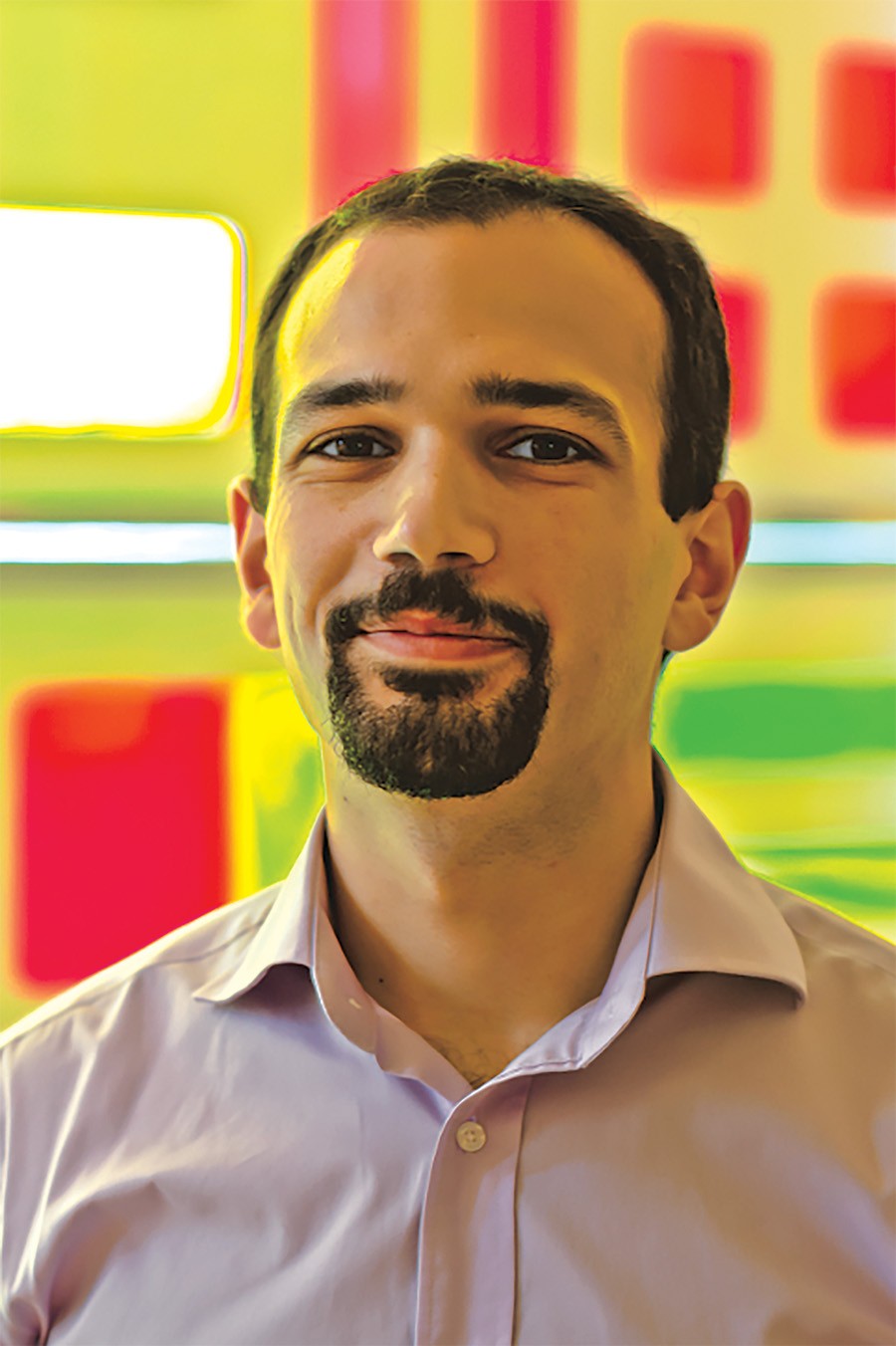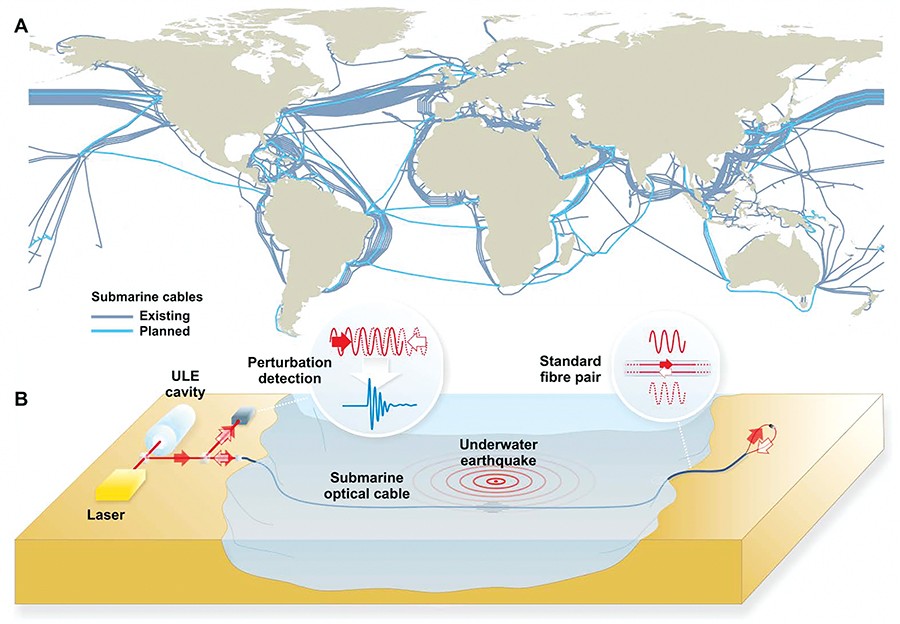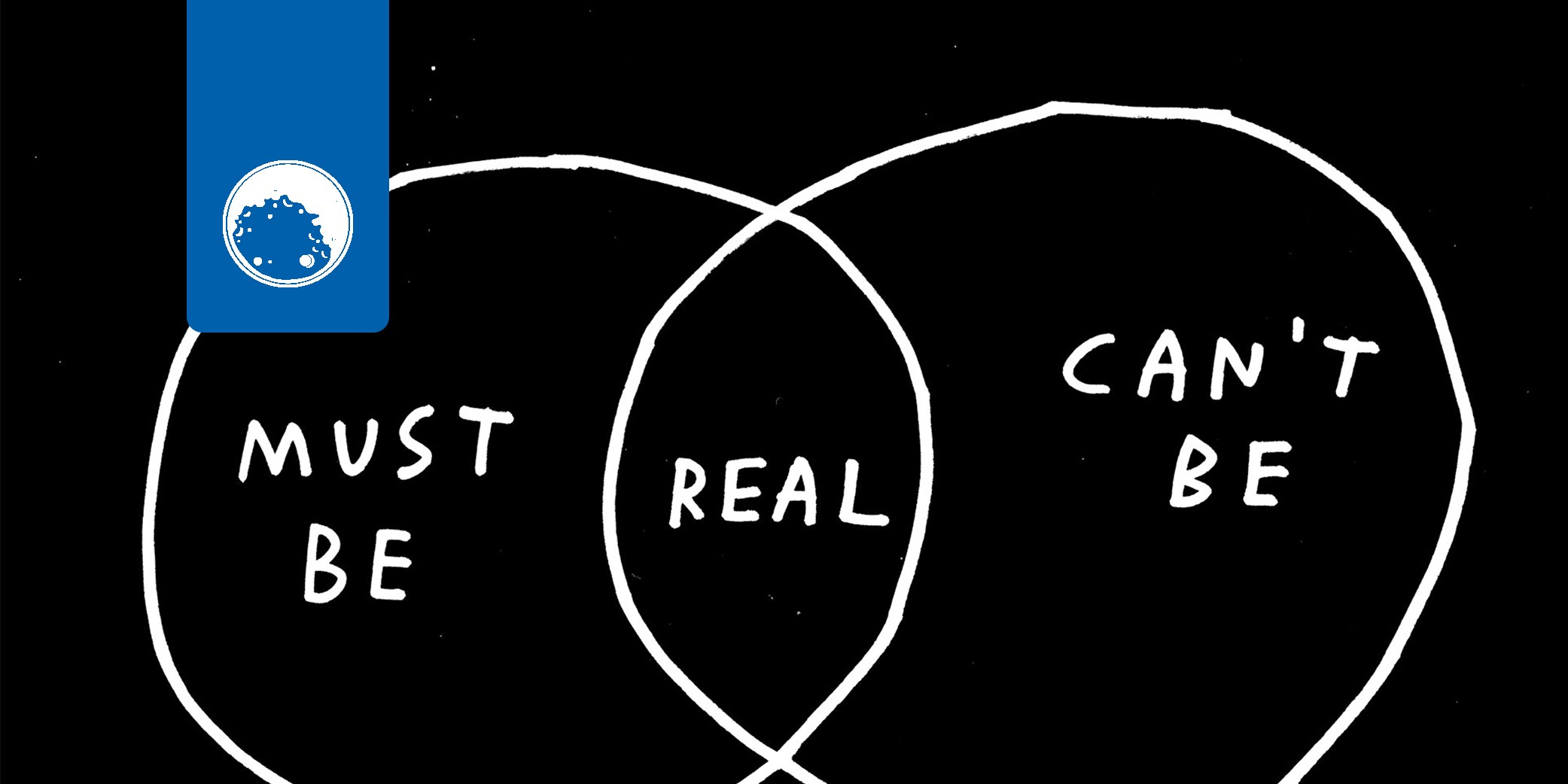Do scientists need to have a clear end-goal before they dive down the research rabbit hole? Sara Cameron speaks to Dr André Xuereb about the winding journey that led to the unintended discovery of a new way to detect earthquakes.
Some of science’s greatest accomplishments were achieved when no one was looking with a purpose. When studying a petri dish of bacterial cultures, Alexander Fleming had no intention of discovering penicillin, and yet he changed the course of human history. Henri Becquerel was trying to make the most of dwindling sunlight to expose photographic plates using uranium when he stumbled upon radioactivity. A chance encounter between a chocolate bar in Percy Spencer’s pocket and the radar machine that melted it sparked the invention of the household microwave.
One would think that with this track record of coincidental breakthroughs, the field of science and research would continue to flourish by embracing curiosity and experimentation. But as interest piques and funding avenues pop up for researchers, there has been a shift in mindset.

Money changes things. And while it does allow people to work hard and answer more questions, it has also fostered expectations from stakeholders. Investors want fast results that will improve their business or product. We, the end-user, want to see our lives changed, one discovery at a ti me. We’re no longer satisfied with research for research’s sake. At least for the most part.
Quantum physicist Dr André Xuereb (Faculty of Science, University of Malta) is all too aware of this issue and its effects on scientific progress. Xuereb explains scientists’ frustration: ‘A lot of funding, in Malta and elsewhere, is dedicated to bringing mature ideas to the market, but that is the ti p of the iceberg. There is an entire innovation lifecycle that must be funded and sustained for good ideas to develop and eventually become technologies. The starting point is often an outlandish idea, and eventually, sometimes by accident, great new technologies are born,’ he says.
STARTING POINTS
Over the past few years, Xuereb has been exploring new possibilities in quantum mechanics.
The field of quantum mechanics attempts to explain the behaviour of atoms and what makes them. Its mathematical principles show that atoms and other particles can exist in states beyond what can be described by the physics of the ordinary objects that surround us. For example, quantum theorems that show objects existing in two places at once off er a scientific basis for teleportation.
Star Trek fans know exactly what we’re talking about, but for those rolling their eyes, the reality is that many things in our everyday lives wouldn’t exist without at least some understanding of quantum physics. Our computers, phones, GPS navigation, digital cameras, LED TV screens, and lasers are all products of the quantum revolution.
The starting point is often an outlandish idea, and eventually, sometimes by accident,
great new technologies are born
Another technology that has changed the way we live and work is modern telecommunications technology. When you pick up your phone to message a friend overseas, call a loved one, or email a colleague, telecoms networks spanning the earth carry the data across continents and under oceans through thousands of kilometres of optical fibres.
The 96-kilometre submarine telecommunication link between Malta and Sicily was Xuereb’s focus in 2015. He organised a team of European experts to begin investigating the potential for building a quantum link between the two countries.
The Austrian, Italian, and Maltese trio were particularly interested in a strange property called ‘entanglement.’ This is a curious property of quantum objects that can be created in pairs of photons, connecting them together. This entanglement can be distributed by giving one of these photons to a friend and keeping the other for yourself, establishing a quantum link between you and this friend—an invisible quantum ‘wire,’ so to speak.
Through this connection, you and your friend can send data faster than over ordinary connections; by modifying the state of the photon at your end, you can instantly affect the state of your friend’s photon, no matter how far apart you are in the universe. Using quantum links such as these, all manner of feats can be performed, including super-secure communications. ‘We wanted to demonstrate that quantum entanglement can be distributed using a 100km-long, established telecoms link, using what was already available, with no laboratory facilities in sight,’ explains Xuereb. His team also wanted to demonstrate that entanglement using polarisation of light was possible. Previously it was thought impossible in submarine conditions, even though it has some very technologically convenient properties.
Two years and several complex experiments later, Xuereb and his team have indeed proven the possibility of quantum communications over submarine telecommunication networks. And with one question answered, a slew more lifted their heads.
The Italian subteam, led by Davide Calonico (Istituto Nazionale di Ricerca Metrologica, INRIM), now turned their attention to a different set of questions for the Malta-Sicily telecommunication network.
MORE TO COME…
Atomic clocks keep the world ticking by providing precise timekeeping for GPS navigation, internet synchronisation, banking transactions, and particle science experiments. In all these activities, exact timing is essential.
These extremely accurate clocks use atomic oscillations as a frequency reference, giving them an average error of only one second every 100 million years. Connecting the world’s atomic clocks would create an international common time base, which would allow people to better synchronise their activities, even over vast distances. For example, bank transactions and trading could happen much faster than they do at present.
This can’t be done by bouncing signals off of spaceborne satellites, since tiny changes in the atmosphere or in satellite orbits can ruin the signal. This is where the fibre-optic network comes back into the picture. Researchers have recently been looking at the telecoms network as a way to make this synchronisation possible. Scientists can use an ultra-stable laser to shine a reference beam along these fibres. Monitoring the optical path and the phase of the optical signal of the beam can then allow them to compare and synchronise the clocks at both ends.
Whilst Calonico and his team were testing this idea on the submarine network between Malta and Sicily, a few thousand kilometres away, meteorology expert Dr Giuseppe Marra was monitoring an 80km link in England. On October 2016, everything changed. One night, he noticed some noise in his data. Unable to attribute the noise to misbehaving equipment or a monitoring malfunction, his gut told him to turn to the news from his home country, Italy. There, he saw that the town of Amatrice had been devastated by an earthquake of 5.9 magnitude.
Further testing confirmed that the waveforms Marra saw in the fibre data matched those recorded by the British Geological Survey during the earthquake. His system even recorded quakes as far away as New Zealand, Mexico and Japan. This was huge news.

In simple terms, the seismic waves from an earthquake tremor cause a series of very slight expansions and contractions in fibre-optic cables, which in turn modify the phase of the cable’s reference beam. These tiny disturbances can be captured by specialised measurement tools at the ends of the cable, capable of detecting changes on the scale of femtoseconds: a millionth of a billionth of a second.
The majority of seismometers are land-based and so small that earthquakes more than a few hundred kilometres from the coast go undetected. Conventional seismometers designed to monitor the seabed are expensive and don’t usually monitor underwater seismic activity in real time. Telecoms networks could offer a solution that would allow us to observe and understand seismic activity in the world’s vast oceans. They would open up a new window through which to observe the processes taking place underneath Earth’s surface, teaching us more about how our planet works. In future, it may even make it possible to detect large earthquakes that cause untold devastation earlier.
The beauty of this discovery is that the infrastructure already exists. No new work is needed. All that is required is to set up lasers at either end of these cables, using up a tiny portion of a cable’s bandwidth without interfering with its use.
THREADS COMING TOGETHER
Marra got together with Xuereb and Calonico, who were already working on the undersea network between Malta and Sicily, to conduct some initial tests. The underwater trial, published in the world-leading journal Science this year along with the terrestrial results, was able to detect a weak tremor of 3.4 magnitude off Malta’s coast. Its epicentre was 89km from the cable’s nearest point, which reinforced the idea that cables can be used as a global seismic detector. ‘We would be able to monitor in real time tiny vibrations all over the planet. This would turn the existing network into a microphone for the Earth,’ Xuereb explains.
If we don’t fund the initial few steps of the innovation lifecycle,
how will we ever develop new technologies?
The system hasn’t been tested on an ocean cable. An interesting target would be a cable that crosses the mid-Atlantic ridge, where the drifting of Eurasian and African tectonic plates creates an area of high seismic activity. Based on the results so far and on conservative assumptions, trials are being planned for the near future on a larger scale, which will give us a better idea of the possibilities.
FURTHER DOWN THE RABBIT HOLE…
In many ways, it is understandable that agencies that fund science favour smaller, more goal-driven research programmes. They seek tangible results in a timely manner to reap quick rewards. But as this story goes to show, a change in mentality is needed.
‘If we don’t fund the initial few steps of the innovation lifecycle, how will we ever develop new technologies? This is a problem that affects scientists from many countries and comes from a mismatch in timescales. A year is a long time in politics, but a decade is often a short time in science,’ Xuereb comments.
Innovation has to start from somewhere, and it often starts from ideas which may have no apparent relevance to our everyday lives. We need to support researchers by keeping an open mind to unknown long-term possibilities—or the world might not only miss the next earthquake but also the next life-changing discovery.





Comments are closed for this article!